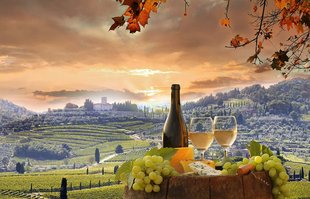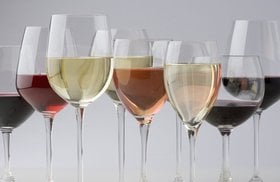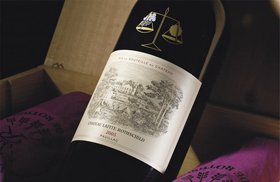Italian Wine: Regions, Best Wines, Prices (2025)
Are you ready to discover everything you need to know about Italian Wine?
Italy is the world’s largest wine producer and one of the most diverse winemaking countries with over 702,000 hectares under vineyard cultivation.
With a winemaking history dating back 4000 years, 20 wine regions, and over 500 grape varieties - things can get confusing in the fascinating world of Italian wine!
In this article, let’s do a deep dive into everything about Italian wine. We’ll decipher Italian wine labels, take a tour among ten of the popular Italian wine regions, and look at eight luscious Italian wines you can buy in 2024!
We’ll also share with you an easy, exciting Way To Buy And Invest In Italian Wines and any other bottles!
Further reading
- Looking for the ideal wine to serve this festive season? Check out our Ultimate Guide To Christmas Wine!
- Or, perhaps you’re looking for The Perfect Red Wine To Give As A Gift?
- Also, check out the Definitive Guide To White Wine!
A Brief History Of Italian Wine
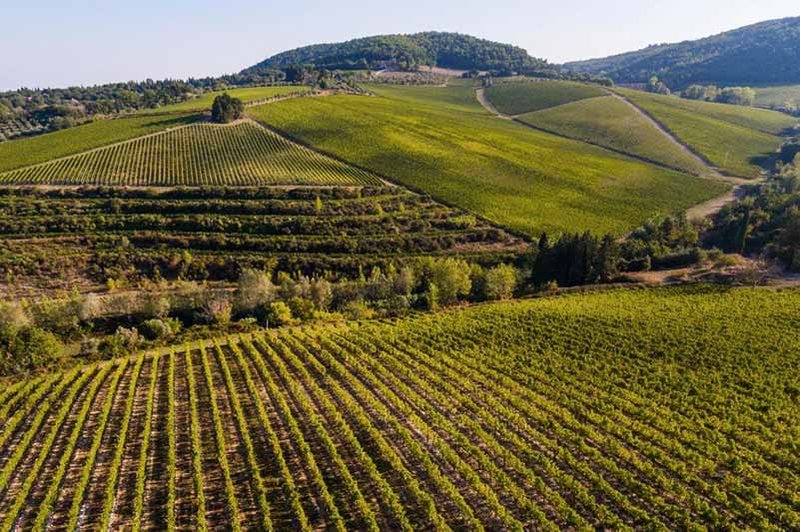
Viticulture was introduced to southern Italy and Sicily by the Mycenaean Greeks at the end of the Bronze Age. Wine production became well established by around 800BC.
In the 2nd century BC, after the Romans defeated the Carthaginians, Italian wine production began to flourish even more.
During this time, Roman Emperor Domitian prohibited viticulture outside of Italy, and large-scale plantations were everywhere. When the laws were relaxed, Italy started cultivating new vines like the ancestor of the Cabernets, Biturica.
Fast forward to 1963, officials unveiled the first official Italian Wine classification system to differentiate the Italian wines.
Classification Of Italian Wines
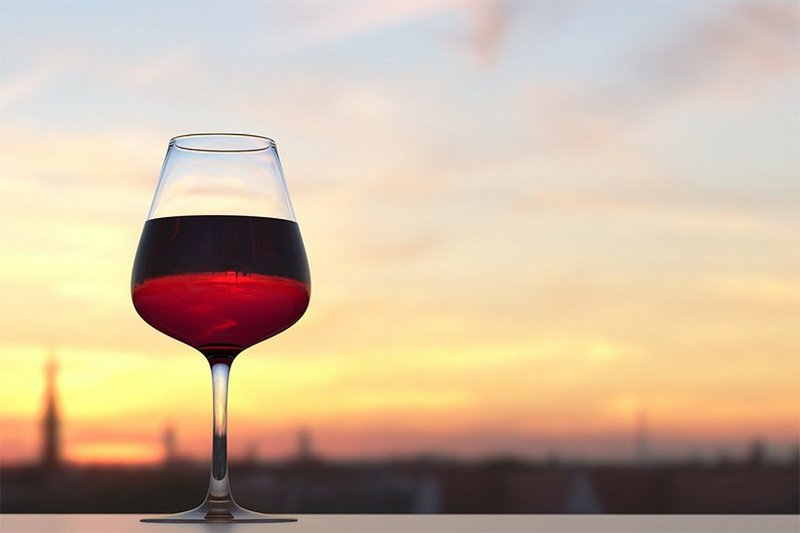
Since its inception, the classification system has changed a few times. The latest modification (2010) established four primary categories.
1. Vini
These wines are informally called 'generic wines' and can be produced anywhere within the European Union. Usually there is no geographic information on the bottle.
2. Vini Varietali
These are varietal wines made using at least 85% of one kind of authorized international grape (Chardonnay, Cabernet Franc, Merlot, Cabernet Sauvignon, Syrah, or Sauvignon Blanc.) You’ll find the grape varieties mentioned on the labels.
3. Vini IGP
Labeled as IGT (Typical Geographical Indication), these wines have a Protected Geographical Indication. They have characteristics positioned halfway between table wines and wines with the DOP designation.
To be labeled as an IGP, wines need to be from a specific Italian territory. The winery needs to follow strict regulations and quality checks (winemaking, aging, wine style, bottling.)
4. Vini DOP
DOP (Protected Designation of Origin) wine zones include all the DOCs and DOCGs. Let’s look at the two sub-categories:
1. Vini DOC (Controlled Designation of Origin)
The DOC wines are from the smaller wine regions, such as Trebbiano d’Abruzzo DOC and Rosso Canosa DOC. These wines follow stricter protocols than IGP and must have been an IGP for at least five years.
2. Vini DOCG (Controlled and Guaranteed Designation of Origin)
These wines need to have had the DOC appellation for ten years and need to pass stricter analyses before commercialization. Not only are they tasted by a committee, but they need to have a history of commercial success as well.
Let’s look at some other words you might find on a label of an Italian wine bottle.
Words To Know On An Italian Wine Label

European wine labels are difficult to read, and Italian wine labels are sometimes the hardest in the group.
Here are a few words that will tell you what you are buying:
- Annata or Vendemmia: Refers to a specific harvest or vintage
- Azienda Agricola: Wine made with a grape variety grown from a specific vineyard or estate
- Classico: Wines from a traditional winemaking zone within a DOCG area
- Riserva: Wine aged for significantly longer than usual (for example, Chianti Riserva)
- Superiore: A higher-quality designation that’s attached to a regional name (Barbera D' Alba Superiore, for instance)
- Tenuta: Means estate
- Vigneto: Means vineyard
Let’s look at the wine regions that produce spectacular Italian wine bottles!
A Quick Guide to Italian Wine Regions
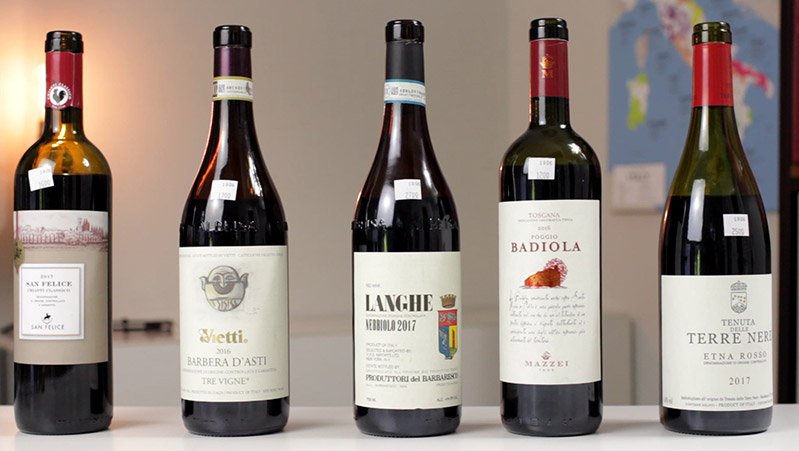
Some of the most renowned Italian wine regions are:
Here are more details about each of these regions.
1. Piedmont
Nebbiolo grapes produce two of the region's favorite wines: Barolo DOCG and Barbaresco DOCG. The other two red wines, Barbera and Dolcetto, are known for their affordability and short drinking windows.
The lesser-known whites, Cortese (Gavi DOCG) and Arneis (Roero DOCG) are also spectacular. And, of course, everyone knows about the sweet sparkling wine Moscato d’Asti, which hails from the province of Asti in Piedmont.
2. Lombardy
Located in north-central Italy, this region boasts 21 DOC, 5 DOCG, and 15 IGT designations.
Known for the “Champagne of Italy” - Franciacorta, and other sensational sparkling wines, this region also produces delightful still wines with Nebbiolo and Verdicchio.
3. Veneto
Veneto, along with Trentino Alto Adige and Friuli-Venezia Giulia, complete the Tre Venezie (a group of renowned northern Italy wine regions.) Veneto produces amazing Pinot Grigio and Prosecco wines.
This region also produces the dry red wine Amarone della Valpolicella, exceptional whites (Garganega and Trebbiano), and a range of fantastic table wine as well.
If you're in the UK you can get a case of fine Veneto wine at VinoSelect.
4. Emilia-Romagna
This prolific wine region produces an equal amount of exceptional red and white wines, including the delicious Lambrusco and Trebbiano wines.
Also read: Wondering how many bottles of wine you need for dinner? Find out How Many Glasses In A Bottle Of Wine to help you plan.
5. Tuscany
This famous central Italian wine region produces stellar wines using Sangiovese and other grapes. Its sub-regions - Chianti, Montalcino, and Montepulciano - produce their own unique wines.
Sangiovese wines are the forerunner in this region and can be 100% Sangiovese or have blends of international red grape varieties (Cabernet Sauvignon or Syrah.)
Tuscany is also home to the classic red wine Vino Nobile di Montepulciano and the sweet wine Vin Santo.
6. Umbria
One of the smaller wine regions in central Italy, Umbria is known for the historic wine region of Orvieto. This wine region covers over 80% of Umbria's vineyards.
Representing this region’s reds is the powerfully tannic, age-worthy wine from Sagrantino de Montefalco DOCG. Among the whites, the dry and crisp Grechetto is the most popular.
7. Marche
Marche (pronounced “mar-Kay”) has two distinct viticultural climates.
It is home to Rosso Conero DOC red wine, made from Montepulciano and Sangiovese grape varieties. You’ll also find a few fruitier red wines made using Montepulciano and Sangiovese.
This region is also known for white wines from the Trebbiano and Verdicchio grapes.
8. Abruzzo
Famous for its ancient winemaking techniques, the most famous product from Abruzzo is Montepulciano wine.
There are three predominant appellations in this region:
- Montepulciano d’Abruzzo DOC for red wines
- Cerasuolo d’Abruzzo DOC for rosé wines
- Trebbiano d’Abruzzo for white wines
Abruzzo produces 22 million cases of wine annually, two-thirds of which are sold for blending.
Also read: Ever wondered about the Health Benefits Of Red Wine? Then this guide is perfect for you!
9. Sicily
Sicily produces fruity, medium-bodied reds and juicy, peachy whites.
Sicily has a great reputation for fabulous fortified wines (Marsala) and sweeter dessert wines (Moscato di Pantelleria). Nero d’Avola and Frappato are blended to make the Cerasuolo di Vittoria DOCG, and Nerello Mascalese and Carricante are blended to produce the Etna DOC.
10. Sardinia
This wine region has the lowest wine production compared to the other areas.
You will find vineyards with French and Spanish grape varieties (Grenache, Carignan, Cabernet Sauvignon), including the rare white grape - Nasco.
The wines from this region are light-bodied, high-alcohol, low acidity, and have decadent dark fruit profiles.
Other Italian Wine Regions:
- Basilicata
- Calabria
- Campania
- Friuli-Venezia Giulia
- Molise
- Puglia
- Lazio
- Liguria
- Trentino Alto Adige
- Valle d’Aosta
Italian Wine Styles Worth Investing In
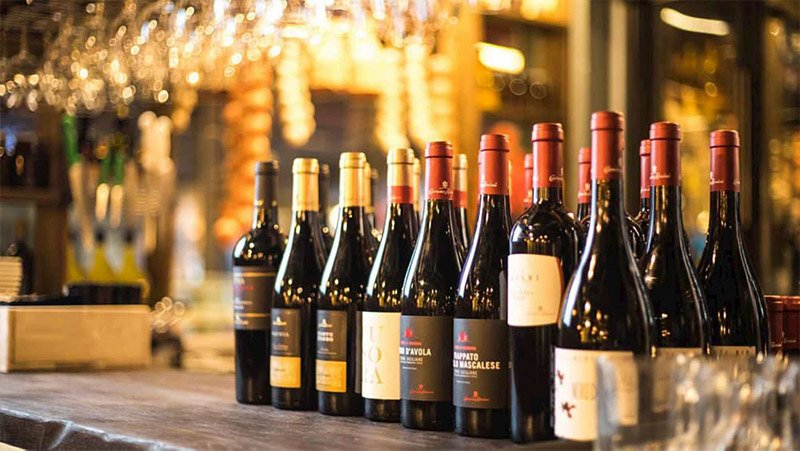
If you’re looking for Italian wines to invest in the long term, these are the broad wine styles that you need to remember:
1. Sangiovese
Focus on these wines if you want to add the best Sangiovese wine to your collection:
- Chianti Classico
Wines from the Chianti Classico region can either be 100% Sangiovese or have a 20% blend of native or international wine grape varietals.
Chianti Classicos are stunning, medium-bodied wines that can hold for ten years or more.
If you spot the word “Riserva” on a Chianti, take note! The winemaker only uses the best grapes from the harvest for these wines, and they can last 10-15 years.
2. Brunello di Montalcino DOCG
Brunello di Montalcino DOCG produces wines with massive structure and aromas. These wines need time in a cellar (25 years or more) before you even consider opening them.
Any Brunello is an excellent investment!
Must read: Store your Italian Wine correctly! Here’s how to Design The Perfect Wine Cellar.
3. Florence
Here Sangiovese is known as Prugnolo Gentile and is blended with native and French grapes.
Wine from this region has grown in popularity with the advances in winemaking techniques. Prugnolo Gentile can be consumed at three years old and can age for 10-15 years.
2. Nebbiolo
Wines made with Nebbiolo are undeniably elegant, and they age gracefully. There are two you need to look out for - Barolo and Barbaresco!
- Barolo
Barolo consists of 11 distinct communes, which are not easily identifiable on the labels.
Barolo wines have undeniable power, high tannin levels, bracing acidity, and 14.5% ABV. They are great to consume in their youth (5-7 years) and can last for 30 years or more.
2. Barbaresco
The various soils on the Tanaro River influence Barbaresco wine’s structure and flavor.
This wine region has only three communes, and the wines are elegant, subdued, and powerful, and ages gracefully for 20 years or more.
3. Super Tuscans
Super Tuscans are unique red blends from Tuscany. These wines are made from non-indigenous grapes (particularly classic Bordeaux varieties like Merlot, Syrah, and Cabernet Sauvignon) blended with Sangiovese.
The most reliable investment wines are Masseto, Sassicaia, Ornellaia, Tignanello and Solaia. (Masseto is a single-vineyard Merlot wine.)
4. Other Age Worthy Italian Wines
Other than wines made from the Sangiovese grape and Nebbiolo grape, there are two more grape varieties you should look for.
- Aglianico: This grape is native to southern Italy, especially Basilicata and Campania. A great Aglianico vintage can age for nearly 50 years!
- Sagrantino: These Italian grapes are found in one place in the world - Umbria - and are best opened after seven years.
Now that you’ve got a clear picture of Italian wine regions and styles, it’s time to figure out which bottles to buy.
To make your search easier, we’ve handpicked eight exceptional Italian wines for your wine collection!
8 Luscious Italian Wines You Can Buy In 2024
Don’t miss getting hold of these fine bottles:
1. 1971 Bartolo Mascarello Canubbi, Barolo DOCG, Italy
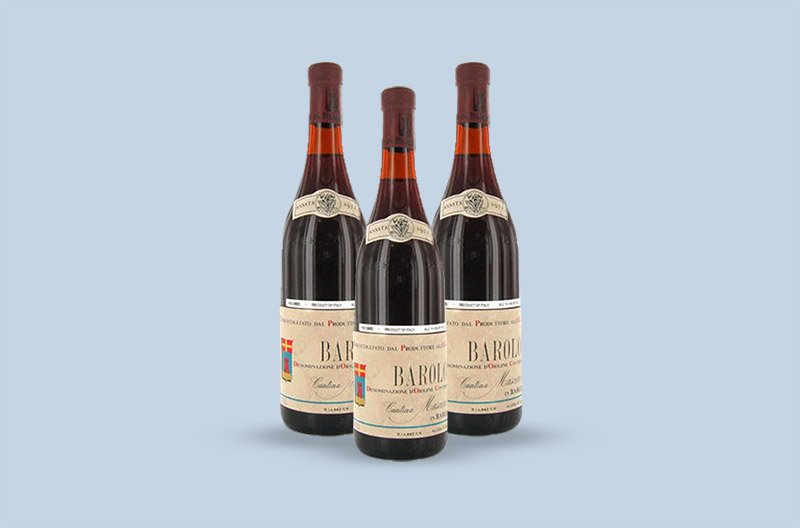
This excellent Italian wine from Piedmont is 100% Nebbiolo and is still palatable after almost 50 years.
Its mature nose presents notes of dried rose, tar, and pine needle. This beautiful wine has flavors of black and red fruits, truffles, and a long finish.
Price of Bartolo Mascarello Canubbi, Barolo DOCG, Italy: $2500
2. 1990 Case Basse by Gianfranco Soldera Brunello di Montalcino Riserva DOCG, Tuscany
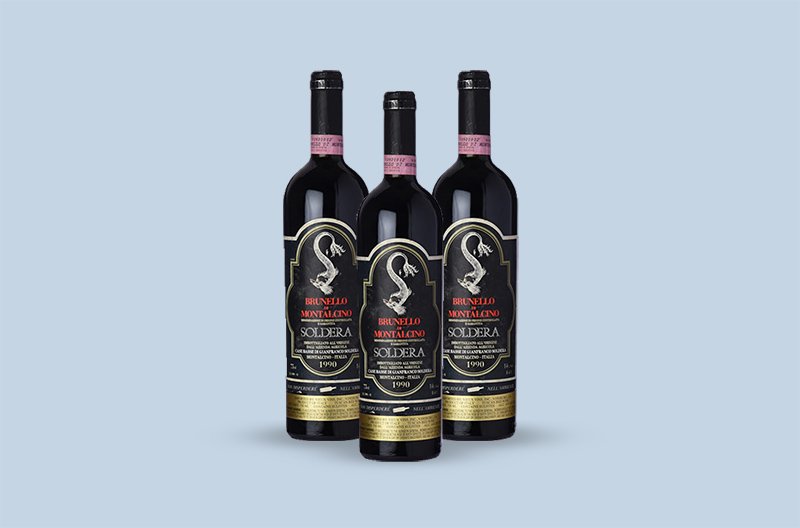
This bold and structured Italian red DOCG wine is 100% Sangiovese, and is considered to be Soldera’s greatest masterpiece!
This Italian wine has cherry and floral aromas paired with succulent berry flavors. This full-bodied wine with its soft tannins will age well.
Price of 1990 Case Basse by Gianfranco Soldera Brunello di Montalcino Riserva DOCG, Tuscany: $1930
3. 2010 Giacomo Conterno Monfortino, Barolo Riserva DOCG

The 2010 vintage from Giacomo Conterno is a savory and classic Italian red wine made with the Nebbiolo grape.
This wine will send you to another dimension with its chiseled aromas of licorice, white truffle, wild berry, and tar. On the palate, you’ll experience intense but delicate flavors of red fruits.
Price of 2010 Giacomo Conterno Monfortino, Barolo Riserva DOCG: $1791
4. 1990 Masseto Toscana IGT, Tuscany, Italy
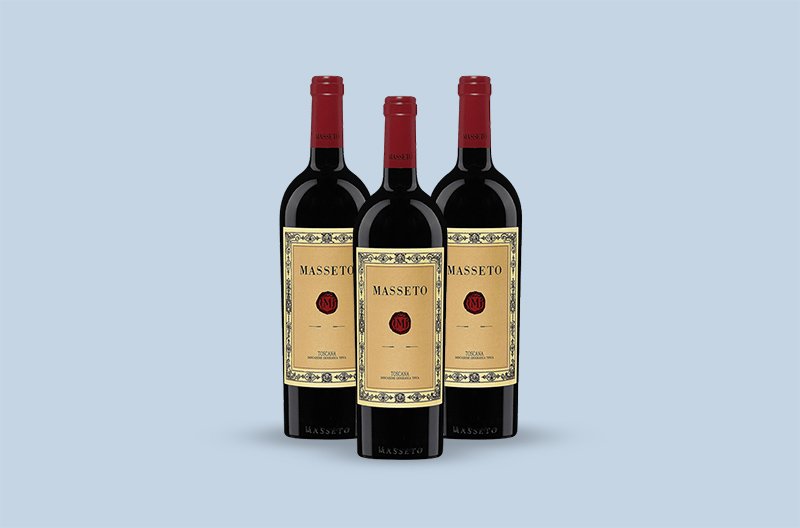
This magnificent Merlot produced by Masseto is the perfect Super Tuscan for a long conversation with a friend.
It is sure to capture your senses with dark chocolate and black cherry aromas, citrus notes and a well-balanced acidity.
Price of 1990 Masseto Toscana IGT, Tuscany, Italy $1375
5. 2011 Giuseppe Quintarelli Amarone della
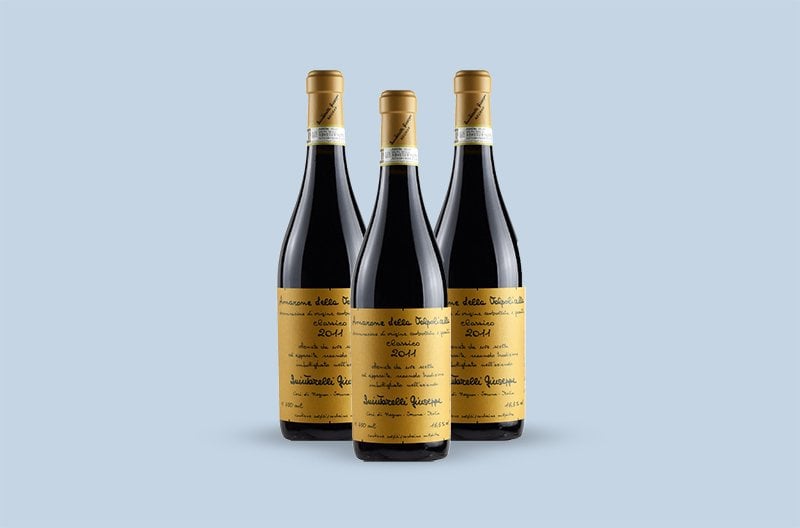
This Italian red wine is a perfect blend of Cabernet Sauvignon, Corvina, Rondinella, and other grape varietals, all harvested by hand.
The elegant, refined full-bodied wine has a spicy bouquet of cocoa and licorice, enriched with fruity notes.
Price of 2011 Giuseppe Quintarelli Amarone della Valpolicella Classico DOCG Selection, Veneto: $1446
6. 1985 Falletto by Bruno Giacosa 'Le Rocche di Castiglione Falletto', Barolo DOCG
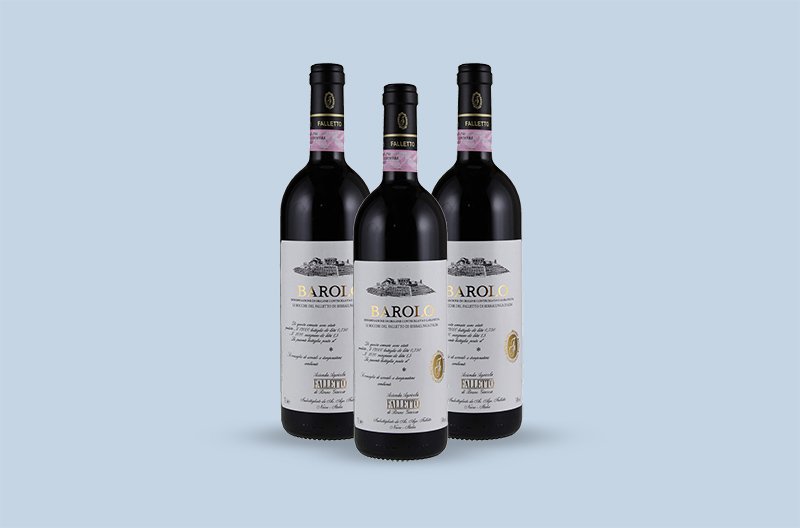
Here’s another fantastic Italian red wine from the Piedmont region is made exclusively from Nebbiolo grapes.
Relish the crushed strawberry, earth, dried roses, and brown spice on the nose! You’ll also experience soft textures with spicy crushed cherry notes backed up by vibrant acidity.
Price of 1985 Falletto by Bruno Giacosa 'Le Rocche di Castiglione Falletto', Barolo DOCG: $1179
7. 2010 Roagna Crichet Paje, Barbaresco DOCG
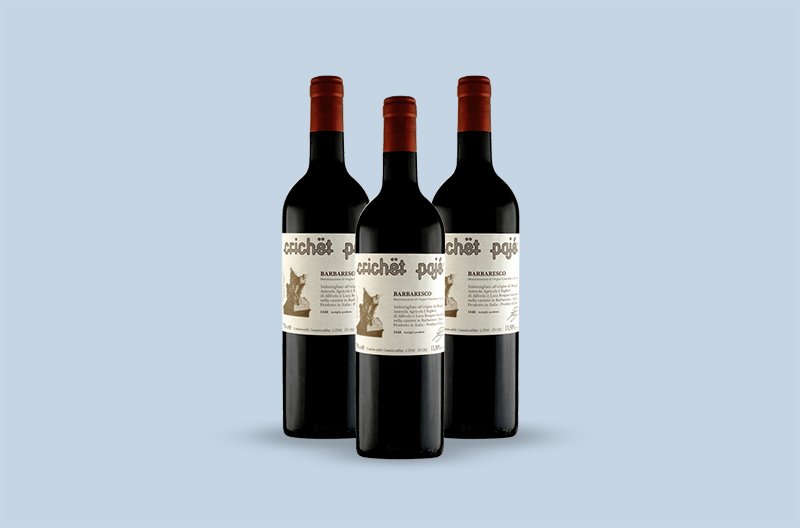
Although this Barbaresco wine is a young Nebbiolo wine, it has all the indicators of an age-worthy bottle.
It has a ripe and savory style and a mature fruit profile with cherry and plum compote notes supported by chunky tannins. The wine also has a surprisingly fresh feeling and a finish with excellent length.
Price of 2010 Roagna Crichet Paje, Barbaresco DOCG: $1000
8. 2006 Miani 'Calvari' Refosco Colli Orientali del Friuli, Friuli-Venezia Giulia
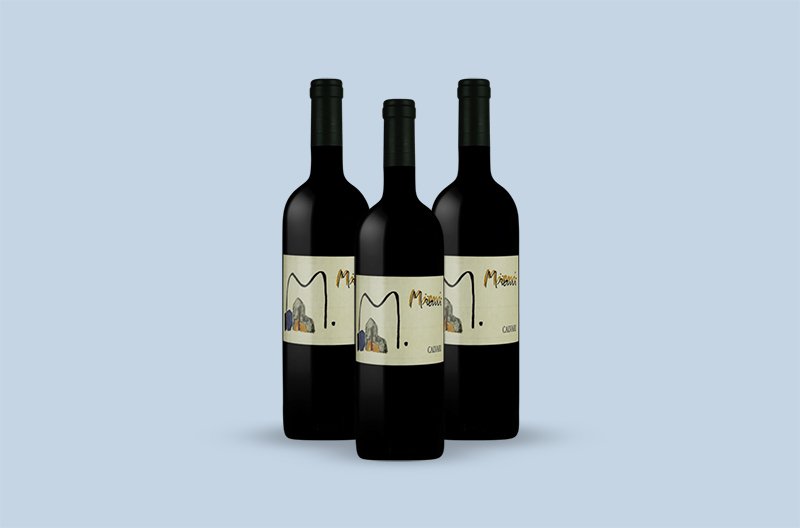
This Italian red has dazzling power, intensity, and class.
It has notes of blueberry and blackberry jam, new leather, espresso, grilled herbs, and spices. This wine has layers of complexity that lead to a stunning finish.
Price of 2006 Miani 'Calvari' Refosco Colli Orientali del Friuli, Friuli-Venezia Giulia: $749
Now, how do you buy a bottle of Italian wine without having to go through the hassles of middlemen, shipping, storage, and even counterfeits?
Here’s the easiest way to do it:
Buy and Store Your Italian Wines with Vinovest

Vinovest is an online wine investment platform that buys, stores, and sells your wine for you.
You no longer have to visit Italy to get your favorite Tuscan wine! You can order, have it delivered, all with just a few clicks.
How it works
In four easy steps, you could be enjoying wines from all over the world.
- Sign up
- Fill up a brief questionnaire: Balanced, conservative, or aggressive? This questionnaire helps our wine experts determine your investing style.
- Add funds: Top up your account with a minimum of $1,000.
- Watch your account grow: This is also an excellent time to enjoy a glass of Chianti Classico.
Benefits of buying, storing, and selling your wine through Vinovest
Find out what else Vinovest can do for you:
1. Best prices:
Vinovest buys wines at wholesale prices from vineyards, merchants, and wineries all over the globe. This means that you won’t be paying for overpriced mark-ups or unwanted taxes.
2. Easy buying, selling, and delivery:
Vinovest makes buying and selling wine as easy as clicking a few buttons. You also get the best prices for your Italian wines or your favorite bottle of Pinot Noir since Vinovest buys them directly from winemakers and merchants. And if you want to deliver the bottle to your home or to the buyer who bought it, Vinovest will take care of everything.
3. Top-notch storage and security:
Vinovest stores your wines in bonded warehouses located across the US, UK, France, and Switzerland. These warehouses have top-notch technology and security to make sure that your wine ages perfectly and peacefully.
4. Predicting the drinking window for your wine:
Take out the guesswork on when to pop the cork on your favorite Italian white wine. Vinovest’s Master Sommeliers will help you predict the perfect drinking window for your sweet red, sweet white wine or any other bottle!
5. Provenance and authenticity:
Don’t be led into buying a fake wine from an unreliable source. Vinovest will make sure the wine you select and purchase is 100% real before the money leaves your account.
6. Curated portfolio:
You don’t have to be a wine expert to have a high-performing portfolio when you have a master team like Vinovest guiding you. A team of Master Sommeliers and data scientists will help you build your portfolio.
7. Low overall costs:
What would you expect to pay for the authentication, storage, and insurance for your wine collection? Well, with Vinovest, you pay a 2.5% annual fee (1.9% for portfolios over $50,000), and they will help you manage your portfolio.
8. Ownership Even though:
Vinovest takes care of all the nitty-gritty, every bottle you buy with them is yours. That’s right, every bottle of Tempranillo, Screaming Eagle, or Ice Wine is 100% yours.
Investing In Italian Wine Couldn’t Get Easier!
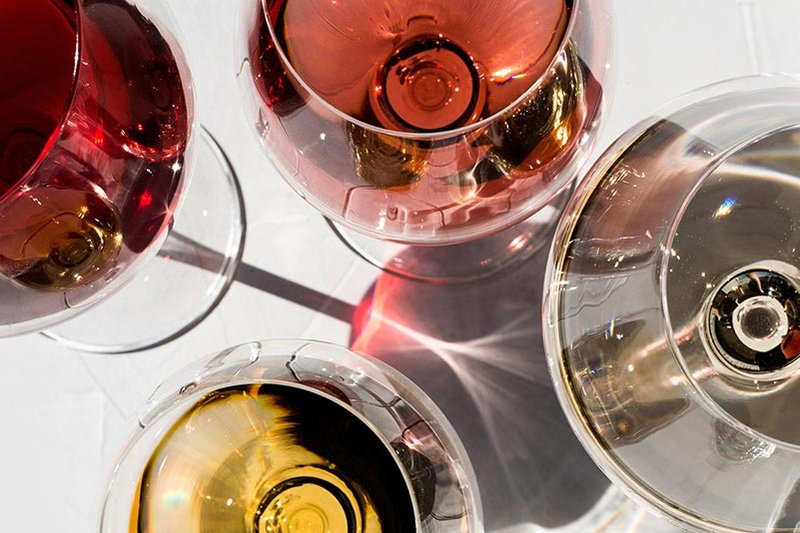
A crisp white for a wedding, a complex red for a special dinner, or one for your investment wine cellar - there is an Italian wine for every wine lover!
Whether you are a newbie or a seasoned wine investor, it is always a good idea to have a team of trusted professionals - like Vinovest - to make the entire process of wine investing hassle-free for you.
So, what are you waiting for?
Sign up and start enjoying the world of wine investing.
